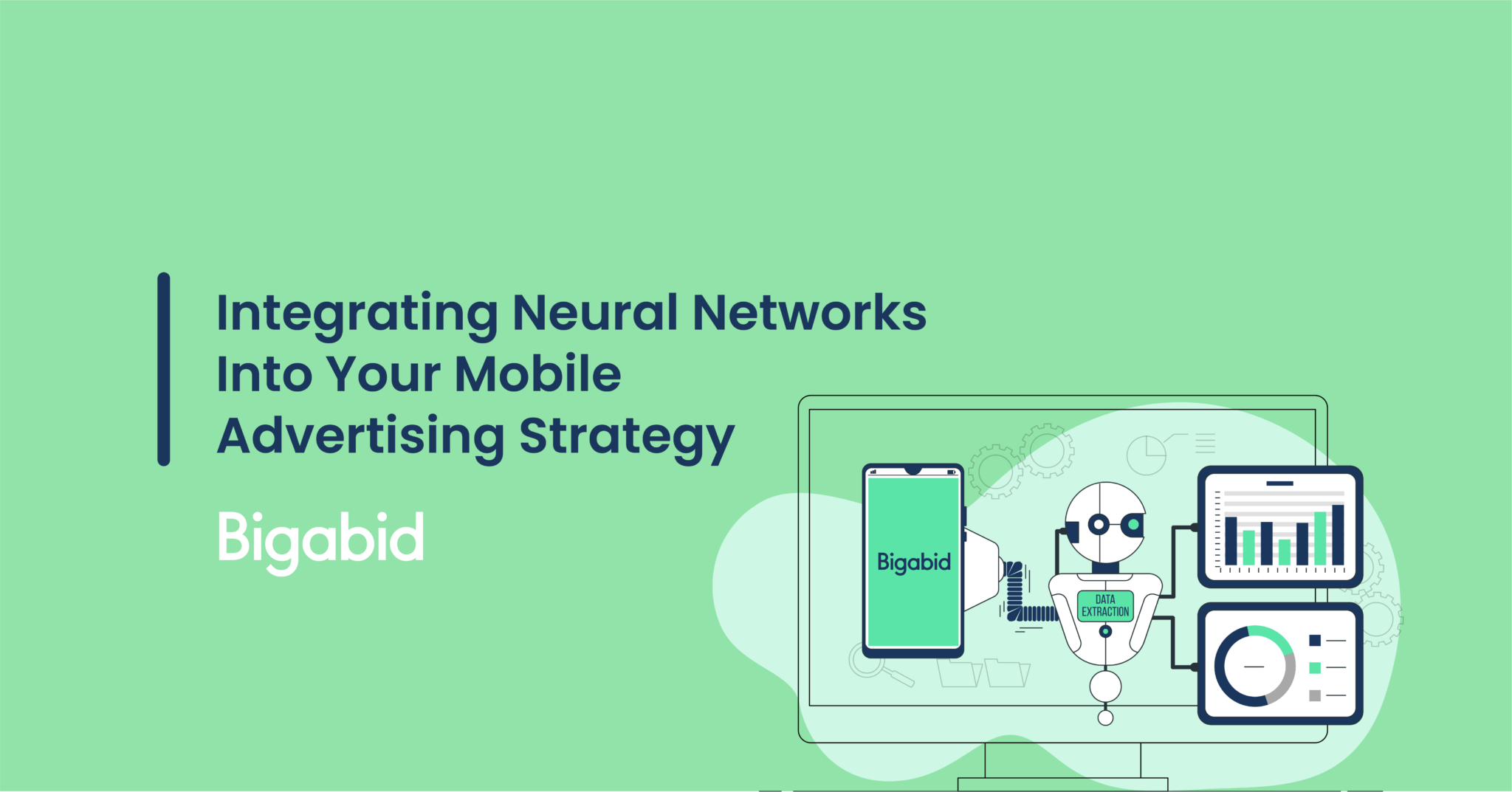
Mobile advertising has undergone a seismic shift in recent years, largely driven by advancements in artificial intelligence (AI) and machine learning (ML). Among these technologies, neural networks have emerged as a revolutionary force, transforming how mobile app marketers and advertisers manage user acquisition, retargeting, and campaign optimization.
For mobile advertisers and demand-side platforms (DSPs), integrating neural networks into your mobile advertising strategy isn’t just a “nice-to-have” anymore—it’s a necessary step to stay competitive, reach the right users, and ensure long-term growth. This blog explores what neural networks offer, their key applications in mobile advertising, and how you can leverage them to enhance your campaigns moving forward.

At their core, neural networks are a type of machine learning model inspired by the way the human brain processes information. Unlike traditional methods, they excel at identifying patterns within vast amounts of data, making them ideal for applications like predicting user behavior, optimizing ad placements, and improving click-through rates (CTR).
For mobile app marketers, the value of neural networks lies in their ability to analyze complex, high-dimensional datasets in real-time. With millions of data points generated every second through mobile devices, neural networks allow marketers to extract actionable insights to deliver targeted and personalized advertising campaigns.
1) Enhanced User Acquisition
Neural networks can process user data to identify high-value audiences with precision. This means your ads are more likely to reach users who are not just likely to click, but also likely to engage, convert, and stay loyal.
Read more about AI and the Future of User Acquisition.
2) Improved Retargeting Campaigns
By leveraging patterns of previous user behavior, neural networks help redefine retargeting strategies, ensuring you re-engage lapsed or inactive users effectively without wasting your budget on the wrong audience.
3) Superior Predictions
Neural networks excel at predictive analytics, such as estimating the likelihood of a click or install (commonly known as predictive CTR). This allows advertisers to fine-tune their bidding strategies on demand-side platforms for maximum return on ad spend (ROAS).
4) Real-Time Optimization
With their ability to analyze and adapt in milliseconds, neural networks power mobile advertising campaigns to dynamically change creatives, messaging, or even audience targeting during live campaigns.
Now that we’ve established why neural networks are essential, let’s examine their specific applications across vital areas of a mobile advertising strategy.

Neural networks have become a core component of user acquisition strategies for mobile app marketers. By analyzing vast amounts of data, they help identify and target users with the highest lifetime value (LTV). This is especially critical in competitive industries like mobile gaming, where the annual budgets for user acquisition run into billions.
Neural networks can generate lookalike audiences with unprecedented accuracy by analyzing behavioral and demographic data from your current high-value users. These models don’t just rely on surface-level metrics but look deeper into user activity patterns.
Many DSPs now incorporate neural networks to optimize programmatic advertising. For example, algorithms predict which users are most likely to click on your ad and dynamically adjust bidding strategies, ensuring every dollar is spent wisely.
Retargeting high-potential users is a complex, data-intensive process. Neural networks simplify this by identifying not only who to retarget but also when and how.
Neural networks analyze behavioral data to predict when users are likely to churn. This allows marketers to deliver timely retargeting ads with tailored incentives to retain these users.
By employing clustering techniques (often layered within neural networks), app marketers can create personalized retargeting campaigns for user segments based on their in-app behavior and preferences.
Neural networks play a pivotal role in CPC and Cost Per Mille (CPM) models by predicting the likelihood of user engagement or clicks. This helps demand-side platforms bid optimally during programmatic auctions.
Deep neural networks have outperformed traditional methods like logistic regression for predicting clicks by analyzing data such as user demographics, app categories, and ad placements. Their ability to process high-cardinality features—for example, app publishers with millions of variations—makes them indispensable in click prediction.
Discover more about the differences between Deep Neural Networks and Neural Networks.
Most DSPs are now leveraging neural networks for real-time bidding (RTB) in mobile advertising. With millions of bid requests per second, neural networks ensure the platform evaluates bids efficiently and selects the most impactful ad placements.
Neural networks allow DSPs to evaluate numerous campaigns for every single bid request in parallel, ensuring higher throughput and improved decision-making speed for advertisers.
Delivering the right creative to the right audience at the right time can make or break your campaign. Neural networks enhance creative optimization workflows by predicting which design, call-to-action, or even visual element is likely to resonate with your target audience.

Now that you’ve seen the immense opportunities neural networks provide, here’s how to get started:
Data fuels neural networks. Ensure you have mechanisms in place to collect, clean, and store user interaction data from your app, website, and advertising campaigns. Key data types include demographic information, app usage behaviors, and past click/conversion metrics.
Invest in platforms and technologies that support neural network implementation. Tools like TensorFlow and PyTorch are excellent for building custom solutions, while companies like Google Cloud or Microsoft Azure offer cloud-based AI services that integrate seamlessly with advertising tools.
Neural networks are often criticized as “black boxes” due to the difficulty in interpreting their decisions. Invest in explainable AI (XAI) solutions to better understand and justify why a given model made specific predictions.
User behavior evolves, and your models should too. Regularly update your neural network models with fresh data to ensure relevance and accuracy.
Run A/B tests to evaluate the performance of campaigns powered by neural networks versus traditional methods. Key metrics to watch for include CTR, ROAS, and user retention rates.

The role of neural networks in mobile advertising continues to grow, with significant advancements on the horizon:
Pretrained models like GPT or BERT can bring enhanced natural language processing capabilities into mobile ad strategies, such as automatically generating engaging ad copy.
Neural networks enable cross-channel optimization, ensuring ad campaigns across social media, search engines, and mobile apps integrate seamlessly for consistent messaging.
The future lies in true 1-to-1 personalization made possible through neural networks—where every user sees a unique ad experience tailored precisely to their preferences and behaviors.
Deep learning algorithms can analyze vast amounts of data to identify patterns and target specific audiences with highly relevant ads, leading to increased ROI.
By utilizing neural networks, marketers can automate the A/B testing process for ad creatives and targeting, saving time and resources while improving overall performance.
For mobile app marketers and advertisers, integrating neural networks into your mobile advertising strategy is a game changer. Whether through improving user acquisition, running smarter retargeting campaigns, or fine-tuning creative execution, these AI models are reshaping the way we approach mobile marketing.
But as with any cutting-edge technology, success takes thoughtful implementation, a strong data foundation, and a commitment to continuous optimization.
Bigabid is at the forefront of integrating neural network and deep learning technologies. Bigabid’s CTO, Amit Attias explains, “Bigabid’s deep learning infrastructure processes terabytes of data and billions of records daily, utilizing state-of-the-art distributed computing environments. Our models are both wide and deep, allowing them to capture complex interactions in data and generalize well from sparse datasets. By optimizing based on all available signals, we deliver stellar campaign results without relying on potentially erroneous or irrelevant third-party data.”
Get started today and partner with us to explore how Bigabid’s hyper-advanced AI tools can elevate your advertising approach.